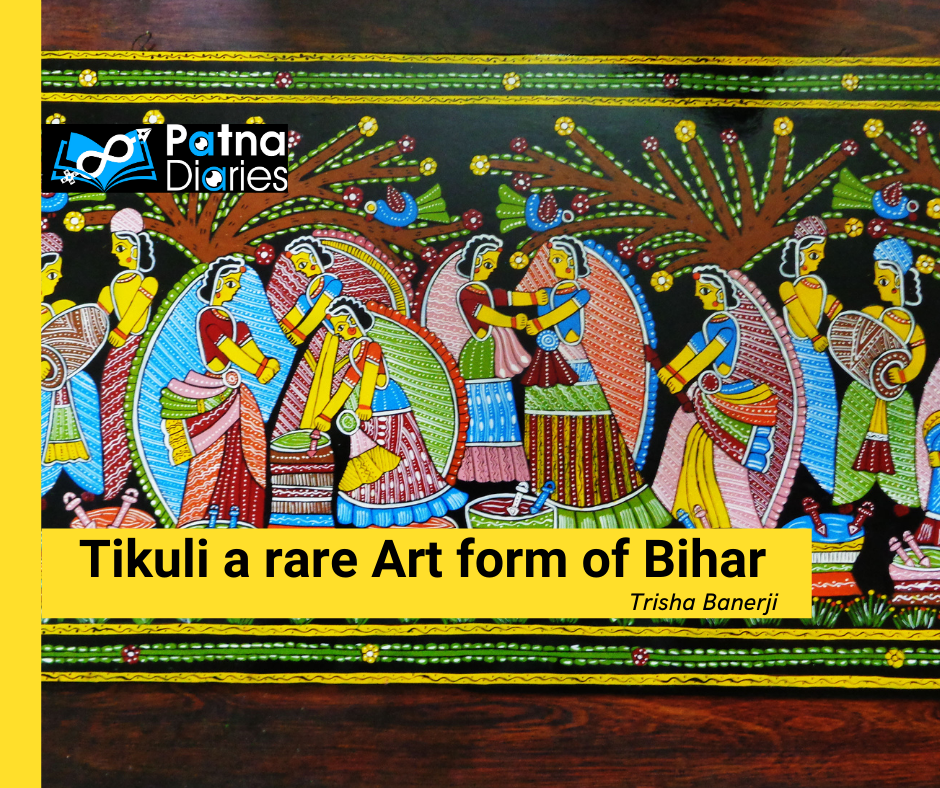Originating 800 years ago from Patna, Tikuli is today a known art form. The term Tikuli refers to Bindi, wore by Indian women in between their foreheads. It’s a unique art form Known for its complex techniques. Initially, the glass used to be melted in a shape of a balloon in the furnace. When cooled down, it was sized according to the requirement with the help of a special tool. The gold work was then pasted on it. With the help of sharp pencils, pictures of flowers, leaves, gods, and goddesses were scratched and painted with various colors and later on were coated with acacia glue. Thus, previously the process of creating this art was very difficult and laborious.

Presently, Tikuli art is mainly done on a special type of wood known as hardboard or MDF board. Each hardboard is cut in different shapes and then with the help of a brush enamel is painted on it. Sandpaper is used to rub each coat of paint to provide it with shine or extra smoothness. After this, the painting is carried out on the board with a brush of 000 sizes. The designing part of this art is difficult as it is carried on hardboard but the final result is amazing in itself. One can see that the Mithila painting has a clear influence on Tikuli art. Therefore people always have an illusion that both the art forms are the same but the main difference is that Mithila painting is done on paper and cloth while Tikuli art is made on a hardboard or MDF board.

In the past Tikuli was mainly used by queens and aristocrat women of the society. The Mughals patronized this art and were very fond of it. Beautiful hand-crafted Tikuli was then seen as a proud possession of the women.
Nowadays this art is mixed with Madhubani painting to make decorative wall paintings, coasters, table mats, trays, and many more. This has increased the aspect of this art and the scope of creativity for the artists. The fusion has created a new charm and has added an economic value to the product, thus making this rare art form of Bihar much in demand.


